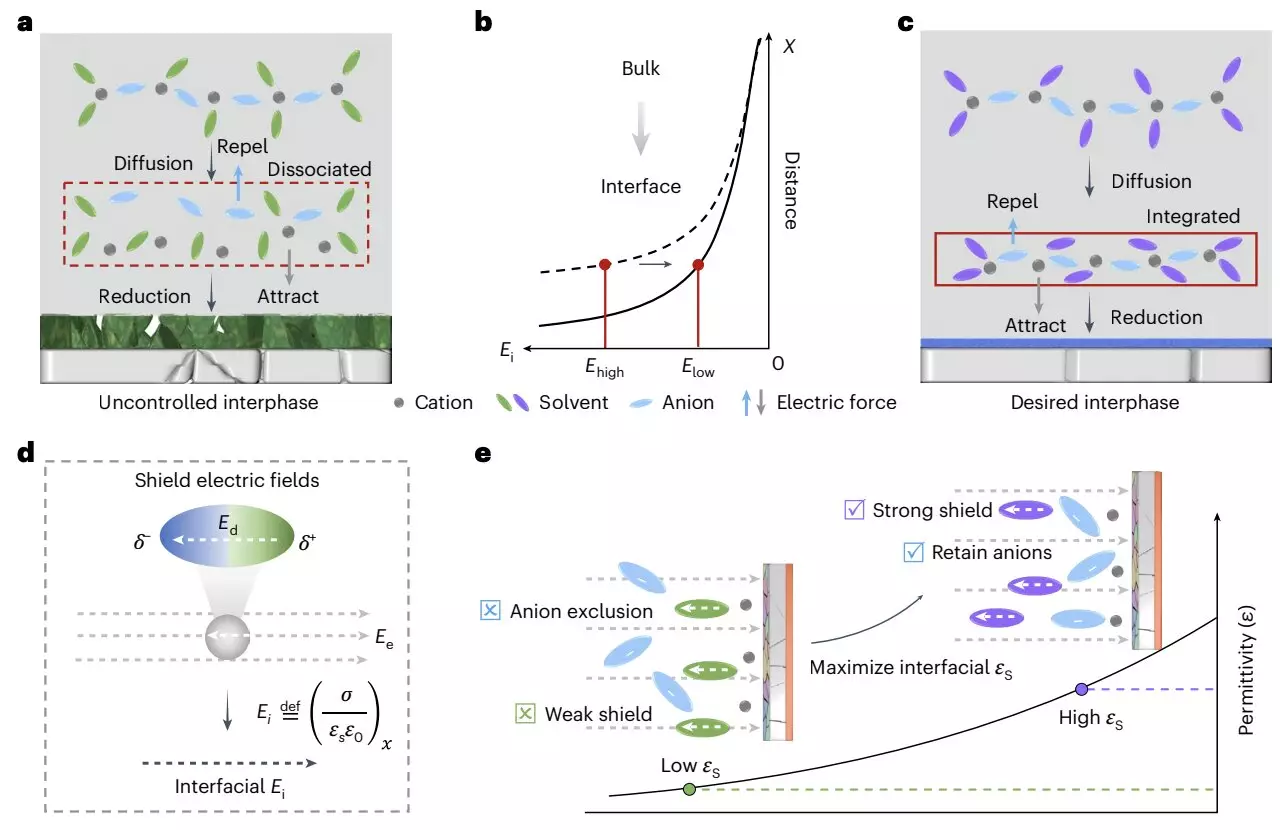Batteries serve as the backbone of modern energy storage solutions, powering everything from smartphones to electric vehicles. As the demand for high-performing batteries escalates, researchers have turned their sights on enhancing the electrode/electrolyte interface in these systems. This interface plays a crucial role in determining the efficiency of energy conversion within batteries. Recent advancements have particularly emphasized lithium-metal batteries (LMBs), which promise significantly higher energy densities and faster charging capabilities compared to traditional lithium-ion batteries (LiBs). However, the path to realizing the full potential of LMBs is marred by several challenges, including high production costs, low Coulombic efficiency, and the formation of lithium dendrites during charging.
Lithium dendrites are undesirable structures that can develop on anodes while charging, resembling tree-like formations of lithium metal. These dendrites pose severe safety risks, contributing to overheating and the potential for battery fires. Therefore, addressing dendrite formation is paramount for the successful commercialization of LMBs. One avenue of research focuses on regulating the solvation structure of lithium ions and innovating new electrolyte formulations to foster the creation of a stable solid-electrolyte interphase (SEI). Nonetheless, few studies have examined how the battery’s dielectric environment influences the stabilization of the electrode/electrolyte interface—an oversight that a recent study from Zhejiang University and collaborating institutes in China seeks to rectify.
Published in *Nature Energy*, the research sheds new light on the dielectric interaction at the electrode/electrolyte interface, proposing a protocol aimed at enhancing the functionality and safety of LMBs. Co-author Xiulin Fan articulated the pressing need for such advancements: “To achieve a low-carbon or carbon-free economy, we need batteries that perform better than current LIBs, targeting an energy density exceeding 500 Wh/kg.” This ambition echoes across the research community as scientists strive to create long-lasting LMBs that can outperform existing technologies.
The innovative approach detailed in the study manipulates the interfacial electric field modulated by the dielectric properties of battery materials. By carefully selecting the dielectric medium, the researchers aim to stabilize the arrangement of cation-anion pairs at the interface, promoting ideal conditions for SEI formation. The dielectric protocol involves using non-solvating solvents with high dielectric constants, which help maintain the structural integrity of cation-anion pairs against the disruptive electric fields generated during operation.
The researchers discovered that this dielectric approach leads to the creation of an anion-rich ambient at the electrode/electrolyte interface. This strategic configuration facilitates the preferential decomposition of anions, which leads to robust interfacial chemistry that is vital for enhancing lithium deposit stability in LMBs. Moreover, their findings indicate that a periodic distribution of cation-anion pairs must exist, showcasing high oscillation amplitudes to mitigate electrolyte decomposition and reduce surface impedance. This intricate interplay ultimately contributes to improved battery performance.
The team successfully implemented their dielectric protocol and achieved notable results, producing an ultra-lean electrolyte with a remarkable energy density of 500 Wh/kg in lithium-metal pouch cells. Fan remarked, “This work reveals the spatial distribution of anions and cations on the charged electrode-electrolyte interface,” leading to optimized electrolyte composition tailored for enhanced performance.
The insights garnered from this research signify a pivotal advancement in the field of battery technology. By illuminating the significance of dielectric effects on the electrode/electrolyte interface, this study lays the groundwork for future endeavors aimed at refining electrolyte formulations for LMBs. As safety concerns in high-energy-density batteries loom large, particularly due to risks associated with dendrite formation and potential fires, such innovations will be instrumental in advancing safer battery solutions for commercial applications.
Moreover, other research teams may leverage the dielectric-mediated approach to explore additional electrolyte candidates and configurations, potentially spurring a new wave of innovations in energy storage technologies. As the electric vehicle and energy storage markets expand, the urgency for reliable, high-density battery solutions continues to accelerate. Collectively, the ongoing efforts within academia and industry to tackle these challenges will pave the way for the next generation of batteries that uphold safety while delivering exceptional performance.

